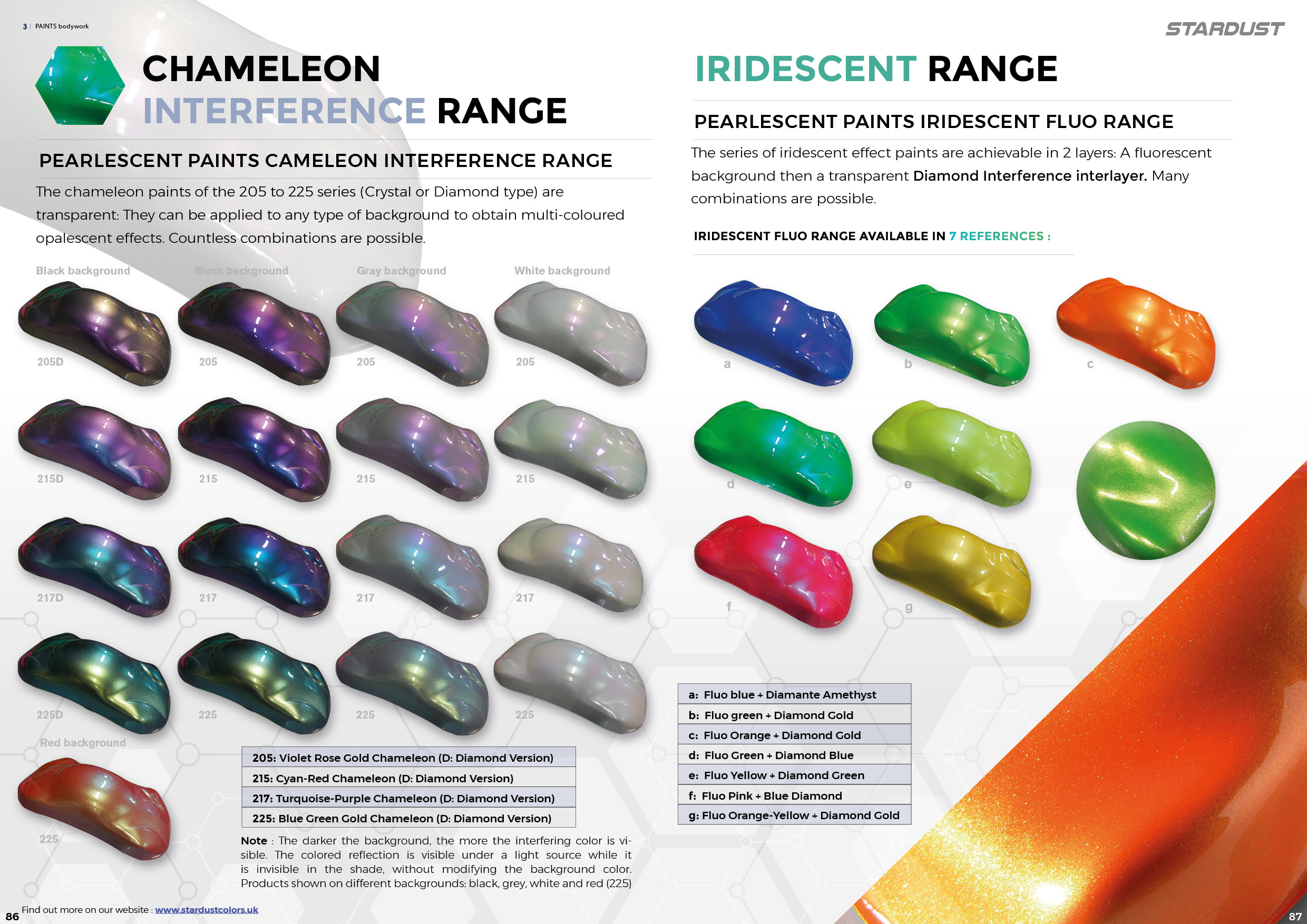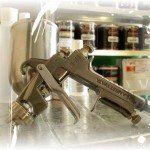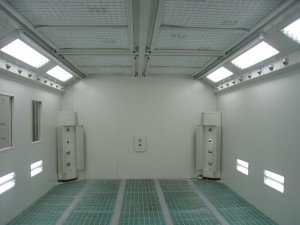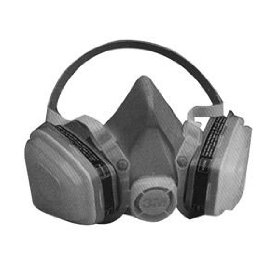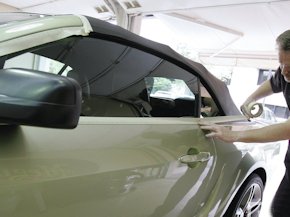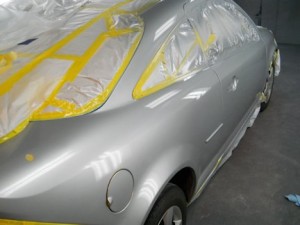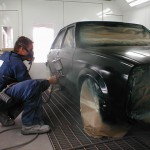Chameleon Interference effects in painting
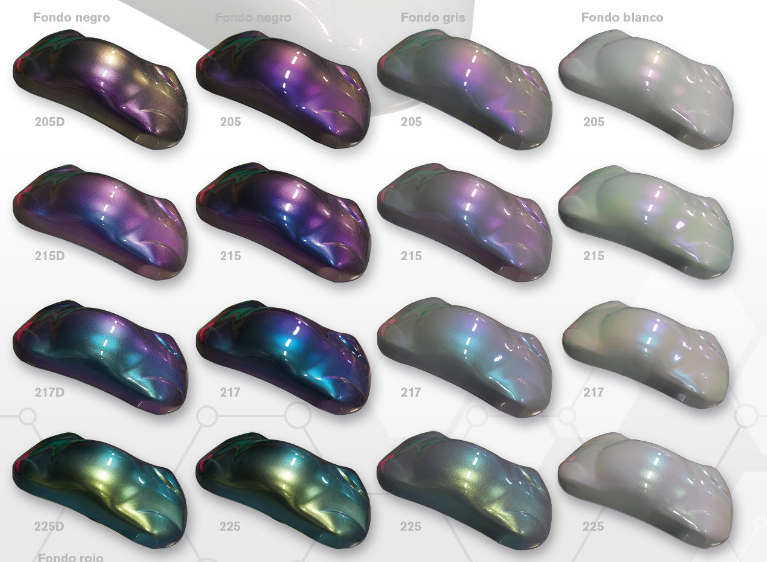 There is a unique collection of 38 references in the Stardust® range, leader and pioneer in Europe in the field of Chameleon colours.
There is a unique collection of 38 references in the Stardust® range, leader and pioneer in Europe in the field of Chameleon colours.
“Chameleon” paints, formerly known as “Beetle” paints, “Flip Flop” paints, or even “Colorshift” paints are pearlescent colors that offer changing color reflections depending on the angle from which they are observed.
Among the chameleon colours, there are a certain number which consist of transparent pearls*.
These chameleon paints then take on the appearance of a whitish liquid, which is in truth almost transparent when applied with an airbrush / spray gun.
*The transparent mother-of-pearl is made of a modern synthetic material imitating natural mica. It is more transparent, more reflective, and less yellowing.
Try changing the background color
Usually applied on a black background, in order to reflect only the light of the mother-of-pearl that composes them*, transparent type chameleon paints can be applied on other background colors.
*the black color reflects little or no light.
We are not talking about a pearly or metallic background color here, because due to certain optical phenomena, a mother-of-pearl on another mother-of-pearl, or a mother-of-pearl on a metal pigment, see their effects cancel out.
We can therefore apply a transparent chameleon color on an opaque colored background, red, yellow, blue, gray… In truth, any color, white included.
The effects are quite interesting and surprising. These are innovative finishes in the field of bodywork or decoration, which are perfectly suitable for indoors or outdoors, thanks to the high resistance of chameleons to UV.
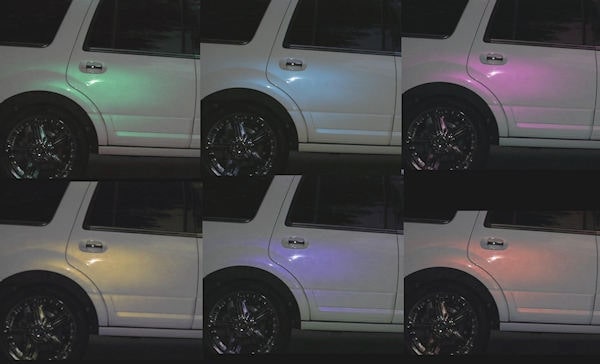 Multicolored interference mother-of-pearl
Multicolored interference mother-of-pearl
Interference is an optical phenomenon. In the field of painting, it designates the return of a single color, different from that of the background.
Example : a GREEN background + a RED interfering layer
Stardustcolors classic interference colors include red, green, blue, gold, and purple ; these effect products can be found either in powder form with Crystal interference pearlescent pearls, or in the form of clearcoats.
Transparent chameleons created richer effects in terms of reflections, with double, triple or quadruple colored reflections.
Depending on their purity and composition, they will modify the background color very slightly or not at all.
In truth, the darker the background color, the more the interfering chameleon reflection will dominate the visible appearance returned to the viewer of the painted piece.
Diamond-like interfering chameleons
Classic chameleons are composed of fairly fine particles, the size of which is in the average of the pigments used in the world of automotive paint. These transparent chameleon effects have been transposed onto the large diamond mother-of-pearl, which is made of glass, and which has much more iridescent and glittery properties.

Interference chameleon sequins from the COSMIC range
Here are flakes from the Metal Flakes family, made of polyester, which reproduce the same multicolored effects as chameleons. These COSMIC flakes are perfectly transparent and have an advantage over the large classic opaque Metal Flakes flakes : they are thinner and much easier to varnish.
There is yet another spangle, still polyester-based, and still 200µm in size, which is the transparent holographic spangle.
All these effects mentioned above belong to the family of “Interference effects”.
